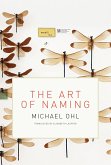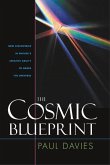Exceptional Creativity in Science and Technology
Individuals, Institutions, and Innovations
Herausgeber: Robinson, Andrew
Exceptional Creativity in Science and Technology
Individuals, Institutions, and Innovations
Herausgeber: Robinson, Andrew
- Broschiertes Buch
- Merkliste
- Auf die Merkliste
- Bewerten Bewerten
- Teilen
- Produkt teilen
- Produkterinnerung
- Produkterinnerung
In the evolution of science and technology, laws governing exceptional creativity and innovation have yet to be discovered. In his influential study The Structure of Scientific Revolutions, the historian Thomas Kuhn noted that the final stage in a scientific breakthrough such as Albert Einstein’s theory of relativity—the most crucial step—was “inscrutable.” The same is still true half a century later.
Andere Kunden interessierten sich auch für
![Where Good Ideas Come from Where Good Ideas Come from]() Steven JohnsonWhere Good Ideas Come from17,99 €
Steven JohnsonWhere Good Ideas Come from17,99 €![Creativity and the Brain Creativity and the Brain]() Mario Tokoro / Ken Mogi (eds.)Creativity and the Brain73,99 €
Mario Tokoro / Ken Mogi (eds.)Creativity and the Brain73,99 €![The Art of Naming The Art of Naming]() Michael OhlThe Art of Naming15,99 €
Michael OhlThe Art of Naming15,99 €![The Postcolonial Science and Technology Studies Reader The Postcolonial Science and Technology Studies Reader]() The Postcolonial Science and Technology Studies Reader38,99 €
The Postcolonial Science and Technology Studies Reader38,99 €![Is God the Only Reality? Is God the Only Reality?]() John Marks TempletonIs God the Only Reality?28,99 €
John Marks TempletonIs God the Only Reality?28,99 €![Cosmic Blueprint Cosmic Blueprint]() Paul DaviesCosmic Blueprint23,99 €
Paul DaviesCosmic Blueprint23,99 €![A Devil's Chaplain A Devil's Chaplain]() Richard DawkinsA Devil's Chaplain14,99 €
Richard DawkinsA Devil's Chaplain14,99 €-
-
-
In the evolution of science and technology, laws governing exceptional creativity and innovation have yet to be discovered. In his influential study The Structure of Scientific Revolutions, the historian Thomas Kuhn noted that the final stage in a scientific breakthrough such as Albert Einstein’s theory of relativity—the most crucial step—was “inscrutable.” The same is still true half a century later.
Produktdetails
- Produktdetails
- Verlag: Templeton Press
- First Edition, 1 edition
- Seitenzahl: 272
- Erscheinungstermin: 18. März 2013
- Englisch
- Abmessung: 226mm x 152mm x 20mm
- Gewicht: 363g
- ISBN-13: 9781599474267
- ISBN-10: 1599474263
- Artikelnr.: 36935992
- Verlag: Templeton Press
- First Edition, 1 edition
- Seitenzahl: 272
- Erscheinungstermin: 18. März 2013
- Englisch
- Abmessung: 226mm x 152mm x 20mm
- Gewicht: 363g
- ISBN-13: 9781599474267
- ISBN-10: 1599474263
- Artikelnr.: 36935992
Andrew Robinson is a former literary editor of the Times Higher Education Supplement in London. He is the author of some twenty-five books in the arts and sciences published by trade and academic publishers, which have been translated into fifteen languages. They include the biographies The Man Who Deciphered Linear B: The Story of Michael Ventris and Einstein: A Hundred Years of Relativity; and two studies of exceptional creativity in the arts and sciences: Sudden Genius? The Gradual Path to Creative Breakthroughs and Genius: A Very Short Introduction. His latest books are Cracking the Egyptian Code: The Revolutionary Life of Jean-François Champollion and, The Scientists: An Epic of Discovery, with contributions from scientists, historians of science, and science writers. A King’s Scholar of Eton College, he holds degrees from Oxford University and the School of Oriental and African Studies, London, and was a visiting fellow of Wolfson College, Cambridge, from 2006–10.
Table of Contents
Introduction / Andrew Robinson / 3
Chapter 1: The Rise and Decline of Hegemonic Systems of Scientific
Creativity
J. Rogers Hollingsworth and David M. Gear / 25
Chapter 2: Exceptional Creativity in Physics: Two Case Studies—Niels Bohr’s
Copenhagen Institute and Enrico Fermi’s Rome Institute
Gino Segrè / 53
Chapter 3: Physics at Bell Labs, 1949–1984: Young Turks and Younger Turks
Philip W. Anderson / 71
Chapter 4: The Usefulness of Useless Knowledge: The Physical Realization of
an Electronic
Computing Instrument at the Institute for Advanced Study, Princeton,
1930–1958
George Dyson / 83
Chapter 5: Education and Exceptional Creativity: The Decoding of DNA and
the
Decipherment of Linear B
Andrew Robinson / 99
Chapter 6: The Sources of Modern Engineering Innovation
David P. Billington and David P. Billington Jr. / 123
Chapter 7: Technically Creative Environments
Susan Hackwood / 145
Chapter 8: Entrepreneurial Creativity
Timothy F. Bresnahan / 163
Chapter 9: Scientific Breakthroughs and Breakthrough Products: Creative
Activity as Technology Turns into Applications
Tony Hey and Jonathan Hey / 191
Chapter 10: A Billion Fresh Pairs of Eyes: The Creation of Self-Adjustable
Eyeglasses
Joshua Silver / 211
Chapter 11: New Ideas from High Platforms: Multigenerational Creativity at
NASA
Baruch S. Blumberg / 227
Afterword: From Michael Faraday to Steve Jobs
Freeman Dyson / 241
Contributors / 251
Index / 255
Introduction / Andrew Robinson / 3
Chapter 1: The Rise and Decline of Hegemonic Systems of Scientific
Creativity
J. Rogers Hollingsworth and David M. Gear / 25
Chapter 2: Exceptional Creativity in Physics: Two Case Studies—Niels Bohr’s
Copenhagen Institute and Enrico Fermi’s Rome Institute
Gino Segrè / 53
Chapter 3: Physics at Bell Labs, 1949–1984: Young Turks and Younger Turks
Philip W. Anderson / 71
Chapter 4: The Usefulness of Useless Knowledge: The Physical Realization of
an Electronic
Computing Instrument at the Institute for Advanced Study, Princeton,
1930–1958
George Dyson / 83
Chapter 5: Education and Exceptional Creativity: The Decoding of DNA and
the
Decipherment of Linear B
Andrew Robinson / 99
Chapter 6: The Sources of Modern Engineering Innovation
David P. Billington and David P. Billington Jr. / 123
Chapter 7: Technically Creative Environments
Susan Hackwood / 145
Chapter 8: Entrepreneurial Creativity
Timothy F. Bresnahan / 163
Chapter 9: Scientific Breakthroughs and Breakthrough Products: Creative
Activity as Technology Turns into Applications
Tony Hey and Jonathan Hey / 191
Chapter 10: A Billion Fresh Pairs of Eyes: The Creation of Self-Adjustable
Eyeglasses
Joshua Silver / 211
Chapter 11: New Ideas from High Platforms: Multigenerational Creativity at
NASA
Baruch S. Blumberg / 227
Afterword: From Michael Faraday to Steve Jobs
Freeman Dyson / 241
Contributors / 251
Index / 255
Table of Contents
Introduction / Andrew Robinson / 3
Chapter 1: The Rise and Decline of Hegemonic Systems of Scientific
Creativity
J. Rogers Hollingsworth and David M. Gear / 25
Chapter 2: Exceptional Creativity in Physics: Two Case Studies—Niels Bohr’s
Copenhagen Institute and Enrico Fermi’s Rome Institute
Gino Segrè / 53
Chapter 3: Physics at Bell Labs, 1949–1984: Young Turks and Younger Turks
Philip W. Anderson / 71
Chapter 4: The Usefulness of Useless Knowledge: The Physical Realization of
an Electronic
Computing Instrument at the Institute for Advanced Study, Princeton,
1930–1958
George Dyson / 83
Chapter 5: Education and Exceptional Creativity: The Decoding of DNA and
the
Decipherment of Linear B
Andrew Robinson / 99
Chapter 6: The Sources of Modern Engineering Innovation
David P. Billington and David P. Billington Jr. / 123
Chapter 7: Technically Creative Environments
Susan Hackwood / 145
Chapter 8: Entrepreneurial Creativity
Timothy F. Bresnahan / 163
Chapter 9: Scientific Breakthroughs and Breakthrough Products: Creative
Activity as Technology Turns into Applications
Tony Hey and Jonathan Hey / 191
Chapter 10: A Billion Fresh Pairs of Eyes: The Creation of Self-Adjustable
Eyeglasses
Joshua Silver / 211
Chapter 11: New Ideas from High Platforms: Multigenerational Creativity at
NASA
Baruch S. Blumberg / 227
Afterword: From Michael Faraday to Steve Jobs
Freeman Dyson / 241
Contributors / 251
Index / 255
Introduction / Andrew Robinson / 3
Chapter 1: The Rise and Decline of Hegemonic Systems of Scientific
Creativity
J. Rogers Hollingsworth and David M. Gear / 25
Chapter 2: Exceptional Creativity in Physics: Two Case Studies—Niels Bohr’s
Copenhagen Institute and Enrico Fermi’s Rome Institute
Gino Segrè / 53
Chapter 3: Physics at Bell Labs, 1949–1984: Young Turks and Younger Turks
Philip W. Anderson / 71
Chapter 4: The Usefulness of Useless Knowledge: The Physical Realization of
an Electronic
Computing Instrument at the Institute for Advanced Study, Princeton,
1930–1958
George Dyson / 83
Chapter 5: Education and Exceptional Creativity: The Decoding of DNA and
the
Decipherment of Linear B
Andrew Robinson / 99
Chapter 6: The Sources of Modern Engineering Innovation
David P. Billington and David P. Billington Jr. / 123
Chapter 7: Technically Creative Environments
Susan Hackwood / 145
Chapter 8: Entrepreneurial Creativity
Timothy F. Bresnahan / 163
Chapter 9: Scientific Breakthroughs and Breakthrough Products: Creative
Activity as Technology Turns into Applications
Tony Hey and Jonathan Hey / 191
Chapter 10: A Billion Fresh Pairs of Eyes: The Creation of Self-Adjustable
Eyeglasses
Joshua Silver / 211
Chapter 11: New Ideas from High Platforms: Multigenerational Creativity at
NASA
Baruch S. Blumberg / 227
Afterword: From Michael Faraday to Steve Jobs
Freeman Dyson / 241
Contributors / 251
Index / 255







